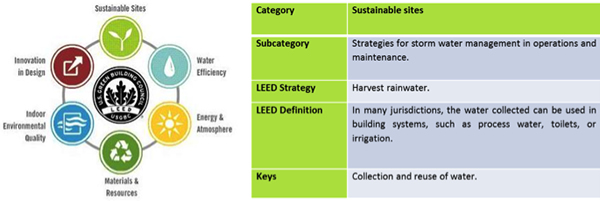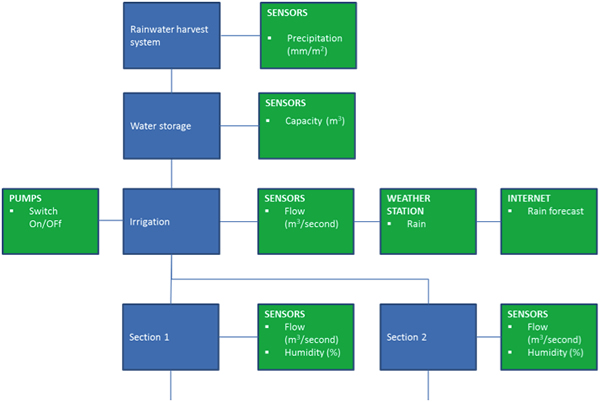 By Jesús Arias García, KNXin.
By Jesús Arias García, KNXin.
I currently live in South Africa, and as I was enjoying my six-day offline holiday in a nature reserve, I could not stop thinking about the overload of information and technology that mankind is exposed to. Being directly involved with technology and building automation, I thought deeply about this matter and how it affects our market.
The nature reserve is called Cederberg, and it seems that time has stopped there. It is in an isolated region in Western Cape and lacks most of the modern-day comforts we enjoy in the First World. Energy and resources are very important here, and there is almost no wastage. You cannot waste what you do not have, and this environment teaches you a lot about what is essential and what is practical.
Off-Grid Environments – the Ultimate Laboratory
When you work in an off-grid environment, you must really make an effort to keep things simple, and you must be very accurate when designing your overall system. As I mentioned in last month’s article ‘KNX and the new Era of Energy Production’, you cannot separate energy production from energy consumption, because they need each other. Energy has to be considered as a whole.

If we want to find the best solutions for home and building automation we must consider not only the control systems, but the surrounding resources. In other words, we should not isolate a building from its environment. When designing a lighting system for example, you must think about light harvesting and how to reduce energy demand by using the existing resource called ‘natural light’. In fact, this applies to all of the subsystems in a house, building or factory.
Thinking Outside of the Box
When I’m looking for a solution, I take my lead from LEED (Leadership in Energy & Environmental Design) because it is accepted worldwide and I particularly like the concept. It helps me to think outside of the box. For example, let’s look at the LEED strategy within the Sustainable Sites category called ‘Harvest rainwater’.

You may think that since water is a common resource where you are, spending time and money on saving it is pointless. Indeed this might be true for the environment in which you are used to working, but let’s look beyond this. In order for the building control market to grow up and reach every corner of the planet, so that it is always considered the logical solution irrespective of the environment, we have to consider more scenarios than just the typical building in the typical city.
What do you notice about this picture?

The vineyard at the bottom of the valley is a green spot in a harsh environment. Every single drop of water counts. So how can we apply automation in this case? The answer is to consider all of the variables, and design a smart scheme.

The above scheme shows how water can be harvested and used in a smart way:
• The sensors can measure the amount of precipitation, which is good for statistics, as well the amount of water remaining in the water tanks.
• The irrigation will only happen when it is needed according to soil (humidity) sensors that are spread strategically across the vineyard, or if rain is not forecast.
• Thanks to the irrigation being organised in sections, each part of the system can be monitored.
• The pumps will only work when absolutely required.
Simplicity Sells Home and Building Automation
Simplicity is not only in the system design, but in how it is used. In the irrigation example, the primary function of the system is to conserve water, which is the main scarce resource in that region. The secondary function is to save the farmer from making subjective and inefficient decisions.
Complementing this, there is energy generation thanks to solar panels, which is monitored via smart metering, and the energy management of the lighting system, solenoid valves and pumps is controlled via KNX. Because all of the data follows the KNX standard, it can be transmitted via the Internet using a radio link, and received by a data acquisition centre, where it is stored with ease.
Working out exercises such as this helps when approaching conventional projects. I find that using three columns, as shown below, and pondering about the simplest solution that will make all of the different aspects work together, works best.

If we need to design solutions for multiple energy consumers and multiple energy generators, we need a modular and flexible backbone such as KNX. KNX helps to keep solutions as simple as possible, but this does not mean that they should fall short of the brief or be too simplistic, just that the whole installation must be as streamlined and straightforward as possible.
Conclusion
We are all familiar with projects that involve luxurious lifestyles which require custom solutions. In practice, the brief is often not even clear or it changes as the project develops. I contend that when solutions are implemented that do not take into account the real resources available, the chances of problems arising are high.
There are already some fascinating projects using KNX out there, and there are more to come. While we move towards Smart Cities, where independent clusters work together sharing data, energy and resources, but manage them locally, we need to adapt our designs to new and emerging needs.
Synergy between the designed system and the available resources is a good selling point, as well as a way to decrease the monthly bills. In some instances, the right design can determine whether a project is viable or not, as in the case of the vineyard.
Ultimately, whatever the scope of the project, be it self-sustaining or inclusive of a maintenance plan, the system involved must remain ultra-simple for the end user to operate and make his or her life better, not more complicated.
Jesús Arias García is a freelance Engineering Consultant for KNXin, a consultant engineering firm specialising in KNX technology and green buildings. His co-authored book ‘KNX for LEED‘ is available through the KNX Online Shop.












